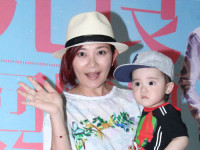ScrollView的使用详细
来源:互联网 发布:九品网络电视官方下载 编辑:程序博客网 时间:2024/06/12 01:10
滚动视图(ScrollView)是指当拥有很多内容,屏幕显示不完时,需要通过滚动来显示完整的视图。包括水平滚动视图(HorizontalScrollView)和垂直滚动视图(ScrollView)
隐藏滚动条
1、标签属性:android:scrollbars=”none”
2、代码设置:
setHorizontalScrollBarEnabled(false);//隐藏横向ScorollView
setVerticalScrollBarEnabled(false);//隐藏纵向ScorollView
setOnTouchListener的使用:判断ScrollView何时滑动到底部
1、getScorollY()——滚动条滑动的距离
2、getMeasuredHeight()——内容的整体高度,包括隐藏部分
3、getHeight()——显示高度。内容未布满屏幕,2=3;内容大于屏幕,3=屏幕高度,2>3。
4、getChildAt(int i)——获取ScorollView的第i个子控件
scrollTo和scrollBy:控制ScrollView视图的位置
<LinearLayout xmlns:android="http://schemas.android.com/apk/res/android" xmlns:tools="http://schemas.android.com/tools" android:layout_width="match_parent" android:layout_height="match_parent" android:orientation="vertical" > <!-- 横向滚动条 --> <!-- <HorizontalScrollView android:id="@+id/horizontalScrollView1" android:layout_width="wrap_content" android:layout_height="match_parent" android:scrollbars="none" > <TextView android:id="@+id/textView1" android:layout_width="wrap_content" android:layout_height="match_parent" android:textSize="22sp" /> </HorizontalScrollView> --> <!-- 纵向滚动条 --> <Button android:id="@+id/button1" android:layout_width="match_parent" android:layout_height="wrap_content" android:text="向上" /> <Button android:id="@+id/button2" android:layout_width="match_parent" android:layout_height="wrap_content" android:text="向下" /> <ScrollView android:id="@+id/scrollView1" android:layout_width="match_parent" android:layout_height="wrap_content" android:scrollbars="none" > <TextView android:id="@+id/textView1" android:layout_width="match_parent" android:layout_height="wrap_content" android:textSize="22sp" /> </ScrollView> </LinearLayout> public class MainActivity extends Activity implements OnClickListener{ private Button button1; private Button button2; private TextView textView; private ScrollView scrollView; @Override protected void onCreate(Bundle savedInstanceState) { super.onCreate(savedInstanceState); setContentView(R.layout.activity_main); button1 = (Button) findViewById(R.id.button1); button2 = (Button) findViewById(R.id.button2); textView = (TextView) findViewById(R.id.textView1); scrollView = (ScrollView) findViewById(R.id.scrollView1); button1.setOnClickListener(this); button2.setOnClickListener(this); //这里是为textView赋值,内容在R.string.text中,测试时最好内容长一些,这里不再贴出。 textView.setText(getResources().getString(R.string.text)); scrollView.setOnTouchListener(new OnTouchListener() { @TargetApi(Build.VERSION_CODES.HONEYCOMB) @Override public boolean onTouch(View v, MotionEvent event) { // TODO Auto-generated method stub switch (event.getAction()) { //手指抬起 case MotionEvent.ACTION_UP: break; //手指落下 case MotionEvent.ACTION_DOWN: break; //手指滑动 case MotionEvent.ACTION_MOVE: /** * 1、getScorollY()——滚动条滑动的距离 * 2、getMeasuredHeight()——内容的整体高度,包括隐藏部分 * 3、getHeight()——显示高度。内容未布满屏幕,2=3;内容大于屏幕,3=屏幕高度,2>3。 */ //顶部状态 if(scrollView.getScrollY()<=0){ Log.e(">>>>>>>>>>>>>>", "顶部"); Toast.makeText(MainActivity.this, "顶部", Toast.LENGTH_SHORT).show(); } //顶部状态 //TextView的总高度<=一屏幕的高度+滚动条的滚动距离(getChildAt(0):第0个子控件) if(scrollView.getChildAt(0).getMeasuredHeight()<= scrollView.getScrollY() + scrollView.getHeight()){ Log.e(">>>>>>>>>>>>>>", "底部"); Toast.makeText(MainActivity.this, "底部", Toast.LENGTH_SHORT).show(); //在文本中追加内容 textView.append("111111111111111111111"); } break; } return false; } }); } @Override public void onClick(View v) { //scrollTo:以滚动视图起始位置开始计算的 //scrollBy:相对前一次的位置,滚动相应的距离 switch (v.getId()) { case R.id.button1: // scrollView.scrollTo(0, -30); scrollView.scrollBy(0, -30); break; case R.id.button2: // scrollView.scrollTo(0, -30); scrollView.scrollBy(0, 30); break; } } } HorizontalScrollView的简单用法
HorizontalScrollView其实是FrameLayout的子类,所以内部只能有一个直接的子View。我们用来做Gallery效果,首选当然是LinearLayout,然后方向设置为水平。
1、布局文件:
<LinearLayout xmlns:android="http://schemas.android.com/apk/res/android" xmlns:tools="http://schemas.android.com/tools" android:layout_width="match_parent" android:layout_height="match_parent" > <HorizontalScrollView android:layout_width="wrap_content" android:layout_height="150dp" android:layout_gravity="center_vertical" android:background="#AA444444" android:scrollbars="none" > <LinearLayout android:id="@+id/id_gallery" android:layout_width="wrap_content" android:layout_height="wrap_content" android:layout_gravity="center_vertical" android:orientation="horizontal" > </LinearLayout> </HorizontalScrollView> </LinearLayout> 很简单,就一个HorizontalScrollView内部有个水平方向的LinearLayout
MainActivity:
public class MainActivity extends Activity { private LinearLayout mGallery; private int[] mImgIds; private LayoutInflater mInflater; @Override protected void onCreate(Bundle savedInstanceState) { super.onCreate(savedInstanceState); requestWindowFeature(Window.FEATURE_NO_TITLE); setContentView(R.layout.activity_main); mInflater = LayoutInflater.from(this); initData(); initView(); } private void initData() { mImgIds = new int[] { R.drawable.a, R.drawable.b, R.drawable.c, R.drawable.d, R.drawable.e, R.drawable.f, R.drawable.g, R.drawable.h, R.drawable.l }; } private void initView() { mGallery = (LinearLayout) findViewById(R.id.id_gallery); for (int i = 0; i < mImgIds.length; i++) { View view = mInflater.inflate(R.layout.activity_index_gallery_item, mGallery, false); ImageView img = (ImageView) view .findViewById(R.id.id_index_gallery_item_image); img.setImageResource(mImgIds[i]); TextView txt = (TextView) view .findViewById(R.id.id_index_gallery_item_text); txt.setText("some info "); mGallery.addView(view); } } } 很简单,我预先准备了一些图片直接放在了Drawble下,然后循环加入HorizontalScrollView的LinearLayout中即可。
- ScrollView的使用详细
- Android ScrollView的使用
- scrollView的使用
- cocostudio Scrollview的使用
- Android ScrollView的使用
- scrollview的使用
- UI-ScrollView的使用
- ScrollView的使用
- Masonry+ScrollView的使用
- ScrollView的使用
- scrollView的使用
- scrollview 的使用
- Android ScrollView的使用
- scrollView 的使用
- Android的ScrollView使用
- ScrollView的使用
- Android ScrollView的使用
- 组件ScrollView的使用
- 阻塞非阻塞与同步异步的区别
- Leetcode 486 python 解题报告
- 从0开始学习 GitHub 系列之「03.Git 速成」----转载自stormzhang 原创文章
- 手把手玩转gitHub
- C语言 · 数组查找及替换
- ScrollView的使用详细
- 自定义控件:QQ气泡效果粘性控件的实现
- 10.1DOM的节点层次
- 斯坦福机器学习: 网易公开课系列笔记(三)——局部加权回归、logistic回归
- picasso-高级使用配置线程池
- 从0开始学习 GitHub 系列之「04.向GitHub 提交代码」----转载自stormzhang 原创文章
- Android各控件Demo下载地址
- 【dp】之 数位
- D. Artsem and Saunders


